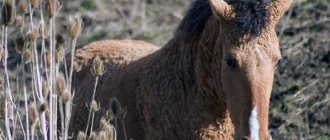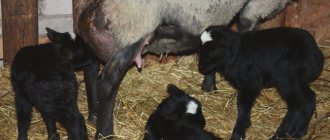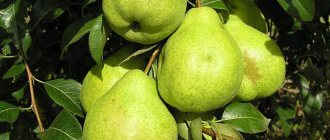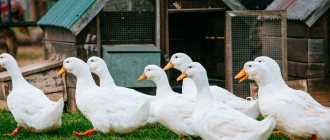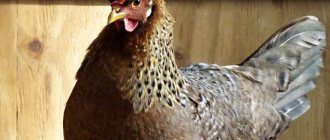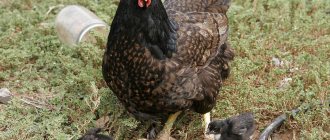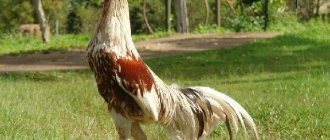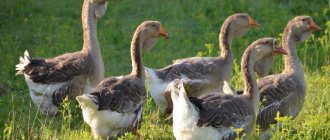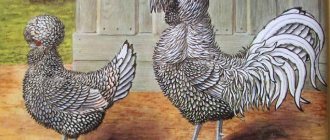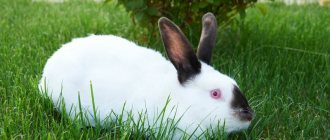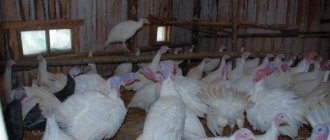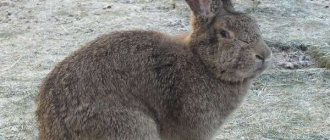Breeding poultry is a very profitable business in modern realities. Broad-breasted turkeys bring a lot of income, and their breeding is an interesting and rewarding process. Birds grow quickly and gain weight easily. Some varieties, with proper care, reach 30 kg. Turkey will never lose its attractiveness in the market due to its marketable appearance, tasty and dietary meat, and high egg production rates. According to a number of indicators, turkey meat is better than chicken, beef, and fish. It is rich in potassium, iron, zinc, sodium, phosphorus, which are beneficial for human immunity, blood, heart and blood vessels. The meat is highly digestible and suitable for the diet of children and the elderly.
Description and characteristics
The broad-breasted turkey was bred in North America in the 60s of the 20th century. The variety was developed by merging a Dutch white female and a bronze broad-breasted turkey. In Russia, the breed is used for industrial purposes to produce large quantities of dietary meat.
External characteristics of the breed:
- Wide, slightly convex chest;
- The body is oval in shape;
- Wide, sloping back;
- Small head, neck;
- Strong pink legs;
- Powerful wings, tail;
- Abundant plumage;
- There are red growths called catkins on the head and under the beak.
There are patches of black feathers on the chest, which farmers call the poultry's distinctive "medallion". As a result of the selection of white turkey, the crosses Grade Maker, Universal, Victoria were bred.
Broad-breasted turkey
The bird is characterized by fast growth and tender meat. Turkeys are demanding in terms of living conditions. In general, this breed is considered universal, as it easily adapts to any changes.
There are 3 groups of birds:
- Easy. This includes small birds with low weight. The average figures for a male are 9 kg, for a female – 6 kg. The group is ideal for industrial keeping and breeding;
- Average. Weight indicators for a male are 15 kg, for a female – from 7 kg;
- Heavy. This includes the largest birds. The weight of males reaches 24 kg, females - from 10 kg.
Birds reach their maximum height at the age of 1.5 years. Then it slows down and they quickly gain weight. During this period, they are allowed to be slaughtered, since excess weight can spoil the taste and quality of the meat.
Birds of this breed are distinguished by a calm disposition and easily make contact with humans. If they are provided with all the conditions for life, they will be friendly and peaceful. They love long walks in the fresh air. Females are excellent brood hens who can simultaneously care for about 80 babies. In some cases, they even hatch ducklings, chicks, and goslings. In general, birds are cage-trained, but it is better if they have access to free range.
Adult individuals should be on the pasture every day for at least an hour, growing ones - at least 3 hours.
Growing
When starting to breed broad-breasted hybrids, their spatial preference should be taken into account, which should be at least one meter. This rule must be observed both during free-range and cage rearing of turkeys. The poultry farmer also needs to know that an adult is in the pen for at least 1 hour a day, and young animals - about 3 hours.
After 120 days of growth, birds stop intensively gaining weight, so this period is considered the best for slaughter. Industrial keeping becomes unprofitable once the turkey reaches 1.5 years of age, when the animal gains maximum weight. Old individuals, whose meat is no longer sufficiently soft, are usually sent for processing to create pates or sausages.
Types of breeds
There are several varieties of the breed, which differ in fertility indicators and appearance. Among all species, the Canadian breed stands out, being the most popular in the world.
White
White broad-breasted turkeys are considered one of the most sought after.
- Birds quickly adapt to their environment.
- Excellent growth rates.
- Eggs reach 70 g, a large turkey lays up to 17 eggs in 28-30 days.
- The feet are widely spaced and the toes are well developed.
- They are used in breeding to develop new breeds.
- They produce large offspring.
White
Fawn
Fawn turkeys have a wide chest.
- Males are completely black with a greenish tint. Turkey feathers are painted in rich bronze shades.
- The weight of males reaches 14.5 kg, females - 8 kg.
- Laying hens produce about 100 eggs per year.
- The variety is distinguished by viable offspring and good development.
Fawn
Stavropol
Stavropol turkeys are easy to distinguish, since they are the largest and most dimensional among all varieties.
- The oval body has a pronounced vertical slope.
- The chest and legs are developed and strong.
- The feathers of females are painted snow-white, some have a characteristic “medallion” on their chest.
- The skin and neck are bright red.
- The plumage is very dense, so the birds require a lot of space. When there is a lack of it, they sweat, which causes itching and redness.
- They are very freedom-loving birds, so if conditions exist, it is better to raise them openly.
Moscow
Moscow turkeys are inferior to other groups only in meat indicators.
- They were bred at the end of the last century by crossing local bronze turkeys and broad-breasted fawn turkeys.
- They are distinguished by high fertility - up to 90 eggs per year.
- Females reach 7 kg in weight, males - 12 kg.
Moscow
Canadian
Canadian broad-breasted turkeys are widely used for industrial purposes throughout the world.
- In Canada, a turkey is called a hybrid.
- The breed was obtained by crossing white Dutch males and bronze broad-breasted females.
- The birds gain weight so quickly that farmers have nicknamed them Indo-ostriches.
- The male is capable of reaching incredible speeds of up to 45 km/h.
- Its weight reaches 22 kg, females - 12 kg.
- Maximum growth occurs at 120-130 days, which is relatively early.
- One carcass yields 85% pure meat.
- In a year, a turkey produces about 50 eggs, incubating the babies for almost 30 days.
- The unpretentious group quickly acclimatizes to the environment.
Canadian
Productivity
Turkey productivity is high. It applies primarily to meat, but the egg indicator is also satisfactory for poultry that has a significant mass. This article will tell you about the largest breed of turkeys.
Meat yield
The volume of meat obtained from poultry depends on its category. Thus, a turkey, which belongs to the heavy variety, at the age of 6 months already gains up to 16 kg and has a marketable carcass. It is suitable for slaughter, and further maintenance due to a decrease in growth rate is considered no longer profitable. Turkeys of the Hybrid Converter breed have large muscle mass.
Egg production
Females begin to lay eggs between 9 and 10 months. At the same time they reach sexual maturity and can be most effectively selected for the breeding herd. The duration of the egg-laying period, depending on the individual characteristics of the bird, is from 6 to 8 months. During the season, a turkey produces up to 100 eggs, weighing about 85 g.
Some record-breaking females can lay more than 100 eggs per season.
Maternal instinct
Turkeys have a well-developed maternal instinct, and they easily sit on eggs. BIG-6 turkeys are also good hens. They are used for breeding not only turkey poults, but also for chicks of other types of poultry. You can place a large amount of incubation material under the female, which is beneficial for the owner. Even large goose eggs are placed under the turkey, which no other poultry except the geese themselves can hatch.
A valuable feature is that the bird not only sits on the nest until the chicks hatch, but also takes care of them in the future, leading and protecting them. The turkey will also lead chicks of other species, but due to the fact that they still require slightly different living conditions than turkey chicks, it is advisable to take them.
In addition to its own chicks, you can leave turkey poults of other breeds and guinea fowl to raise.
The absence of maternal instinct is observed very rarely in birds. In some cases, females that are too young or very old may refuse to sit on the nest due to the fact that their body is either not yet ready for incubation or can no longer bear such a load. In these situations, trying to force the bird onto the nest is useless.
Breeding
Breeding a white broad-breasted turkey will require some effort. In order for hens to lay eggs well and consistently, it is worth taking care of a properly designed nest. It is necessary that it is installed in the correct location. In order for the female to get used to it, it should be installed 10-14 days before the start of brooding.
She will lay fruitfully if she feels completely safe, so the nest should be installed away from the entrance, noisy and bustling places.
If eggs are needed only for food, then it is more practical to install a nest with an egg collector.
In general, turkey poults hatch in 28-29 days. If eggs are purchased for cultivation in an incubator, then you need to ensure that they:
- They were smooth to the touch, without unevenness or roughness;
- There was no hint of mold;
- The yolk was inactive, located strictly in the middle of the egg with a regular round shape.
The survival rate of newborn babies largely depends on the living conditions at first. When breeding at home, follow the following rules:
- Place hatched turkeys in a box like a brooder;
- At first, provide continuous light using additional sources and an air temperature of at least 36°C;
- Keep bedding clean and dry to protect your livestock from infections; Clean the flooring every day and completely change it weekly;
- Maintain drinking water temperature from 25°C;
- Make sure that the chicks are not wet or damp;
- After 50-60 days, provide a daily hour-long walk in the fresh air. The walking area must be fenced.
Chicks have poor eyesight, so place the feeder and drinker in close proximity to them.
Add bright elements to the food (carrots, boiled yolk, colored cereals) so that the turkey poults find it faster and eat. Raising white turkeys is not difficult if you follow simple rules.
History of creation
In the middle of the last century, American breeders began breeding this breed. For 10 years, painstaking work was carried out to create productive individuals with tasty meat. The Bronze Broad-breasted and White Dutch were taken as the basis. In addition to excellent productivity, the resulting livestock showed the effect of heterosis.
Heterosis is a biological phenomenon. Its essence is to enhance fertility, increase size and improve the vitality of the first generation compared to the parent material.
White broad-breasted fish are actively involved in the breeding of new varieties. They took part in the birth of such famous early broilers as Grade Maker, BIG 6, Universal and Victoria.
Scientists still haven’t figured out why turkeys need massive skin formations on their necks.
Maintenance and care
You cannot keep more than 40 females and 5 males in one place, otherwise they will become aggressive and can cause serious bodily harm to each other.
When raising white broad-breasted turkeys, pay attention to the barn. It should be dry and warm. Its bottom is covered with a thick layer of hay or straw. In the nests, they build a side of hay or make a wooden edge so that the egg does not roll out or break. The latter option is preferable, since in this case even soft bedding will not fall out, because hatching on a hard surface is harmful. Sometimes turkeys sit on top of their nests, so care should be taken to ensure the roof is angled.
The height of the perch should not exceed 25 cm. Before moving the birds, the turkey house is carefully inspected for the presence of splinters, nails and other dangerous elements that could injure the birds or eggs. Females are not picky about living conditions, but are very clean.
During the mating period, it is better to keep them separately from the males, as the latter become too aggressive. They can attack and injure other birds in the barn, or attack humans.
For small turkey poults, 1 m2 is enough for 4-5 birds. At the age of 120 days, the space is doubled. Before the chicks move in, the floor is thoroughly treated with slaked lime to disinfect the room.
Place for keeping
You can build a separate room or adapt a chicken coop for white, broad-chested turkeys. Remember that the premises must be warm. The worst thing for birds is drafts and dampness. Because of this, a room without windows is preferable. Perches should be at least 60 cm in length and width so that the birds feel comfortable. When building them, it is necessary to take into account the number and weight of the birds that will be perched, in order to correctly select the thickness of the beams. Perches are placed at a distance of 80 cm from the floor.
Climate and lighting
The white broad-breasted turkey breed constantly needs a lot of light. The temperature in the poultry house should never fall below 15°C. Normal daylight hours for birds are 8 hours. In winter, the amount of light will need to be increased artificially.
Feeding
Skillful selection of feeders will allow you to properly organize the entire process and save food.
They are placed no higher than the heads of individuals. They should be different for chicks and adults, for different types of products.
For mineral substances, a sectional compartment is installed. If there is no possibility of constant control of food, bunker devices are installed into which food is automatically added as it is eaten.
Since newborn representatives of the white broad-breasted turkey breed have soft beaks, it is better to use nurseries made of rubber, silicone or other soft materials, or vacuum drinkers.
Adult birds can easily turn over a trough with food or water, so it is better to further strengthen it. They drink a lot, which is why they need constant access to clean, fresh water.
The nipple drinker is recognized as the best, since water does not stagnate in it, and each individual receives exactly as much moisture as it wants.
It is necessary to ensure that the water, which needs to be changed regularly, does not fall on the birds, otherwise they may catch a cold and get sick.
Turkeys are ardent owners, so they do not want to share the territory with their comrades. Each individual should have 20 cm of free space near the nursery, 4 cm at the drinking bowl.
Individuals need to be fed 3 times a day, during the reproductive period - 5 times, newborn babies - 8 times.
Turkey chicks are fed with grated boiled eggs and ground cereal. They should receive a large amount of crushed greens. Adults are given alfalfa, cabbage, and nettles in dried or wet form. In the morning and afternoon, the birds receive wet mash, in the evening - dry mixture. The diet should include a lot of greens, vegetables and sprouted grains. In late fall, winter and early spring, turkeys are fed chemicals.
In the summer, various useful herbs are dried to be given in steamed form in the winter. They also stock up on hay for the winter. During this period, turkey poults drink cow's milk.
What to feed a white broad-breasted turkey?
We recommend reading our other articles
- Peach curl
- The best early varieties of cherries with descriptions and photos
- What is the best way to treat potatoes before planting?
- How to light a smoker for bees
Useful plants in the diet of turkeys
Turkey feeders must be placed in a certain way. The sides should not be lower than the turkey’s chest, otherwise all the food will end up on the floor - the birds will scatter it. The container itself can be anything. Many breeders use any available household containers, including basins, metal and plastic boxes, and wooden troughs. But if funds allow, you can purchase special feeders for turkeys.
The water container should also have high sides. Since turkeys often spill their contents and suffer from thirst for a long time, until the breeder sees them.
Plants prohibited for feeding turkeys
Adults are fed a mixture of grass and bran, as well as grain. You can buy special food for turkeys so as not to make cereal porridge yourself. The birds are fed 2 times a day, in the morning (grain) and in the evening (mash). During the day, they get their own food while walking.
Diseases and prevention
Turkeys are very susceptible to obesity, but mainly in adulthood. This affects not only the quality of the meat, but also the health of the birds. To prevent the problem, you need to arrange walks as often as possible. It is better to install a fence in the pasture so that freedom-loving birds do not leave the territory and are protected from the wind.
Birds often get bedbugs, fleas, lice, and ticks. Parasites quickly spread throughout the population, transmitted from bird to bird.
They develop severe mange and turkeys often clean their feathers. Against this background, appetite increases, but the activity of individuals decreases. To prevent the appearance of parasites, you should regularly inspect perches, floors, and walls. It is important to seal any cracks and crevices, as these can allow rodents to enter the shed and carry parasites.
In the turkey house, a container with sand and wood ash in equal parts is placed so that the birds bathe and clean their feathers.
Add crumbly amounts as they are used up. The appearance and spread of lice eaters is associated with poor nutrition, so the main guarantee of health is good nutrition.
It has been observed that diseases more often affect young individuals. They suffer from ailments from a runny nose, from serious infectious diseases that affect the entire population. If you do not get treatment in a timely manner, you can discover horrifying consequences over time.
Mandatory vaccination is a serious method of treating infections.
Often the younger generation suffers from tuberculosis, smallpox, histomoniasis, and brucellosis. Treatment at home involves taking antibiotics.
After slaughter, the walls of the turkey house are treated with chlorophos and limestone several times to destroy parasites and bacteria. Prevention of diseases consists of monthly supplementation with medicinal drugs.
Improper nutrition threatens the birds' perverted appetite. It manifests itself in a constant and obsessive desire to swallow small pebbles, dried leaves, and wood chips. There is only one way to combat this - a well-thought-out and proportionate diet of turkeys.
What can turkey poults get sick with and how to cure them
Old birds have strong immunity, and therefore they are practically not susceptible to diseases. But turkey poults often catch various infections. Diseases of turkeys cannot be left untreated, otherwise serious consequences may occur, including death, and therefore it is necessary to vaccinate the livestock in a timely manner.
White broad-breasted turkey in the meadow
The breed is a heat-loving breed, and therefore the temperature in the poultry house should not be lower than +15°C. Turkey poults can suffer from the following infections:
- smallpox;
- tuberculosis;
- brucellosis;
- histomoniasis.
The above ailments are very difficult to cure using antibiotics. Farmers have to slaughter livestock, which leads to large losses, and therefore it is necessary to create conditions on the farm so that diseases do not occur.
It is necessary to regularly maintain cleanliness in the turkey poultry. The walls are treated with lime, and after the scheduled slaughter, mandatory treatment is carried out using chlorophos.
Thanks to disinfection, insects are destroyed, and at the same time their appearance in the future is prevented. Before moving in a new livestock, it is imperative to inspect the entire premises for holes in the floor and walls through which rodents, who spread infectious diseases, can enter. Everything needs to be sealed.
Another problem facing turkeys is the appearance of internal parasites, which often affect the respiratory system of birds. A good preventive measure is the regular purchase of special veterinary drugs for deworming livestock.
If the birds' diet is not composed correctly, then the birds develop a perverted appetite. The main sign indicating a problem is the ingestion of inedible objects (dry leaves, stones, twigs and other foreign objects). To combat the disease, a strict diet is used, and the livestock is also transferred to balanced feeding.
Egg production
Broad-breasted turkeys begin laying eggs at 7-9 months of age. This period lasts about six months, the female can lay up to 120 eggs. An earlier time of egg laying threatens deviations in the future.
The breed is characterized by high fertility, because over a period of time the variety can produce from 80 eggs weighing 80 g. The eggs are beige in appearance with brown speckles. The shell is very dense and difficult to break or crush. According to statistics, 75% of the offspring are hatched, which indicates the viability of the chicks.
The cost of keeping poultry pays off already at 20 weeks, when individuals are actively gaining weight. It is beneficial that one female is able to keep track of a huge number of babies - up to 80 pieces.
Advantages and disadvantages
Broad-breasted turkeys gained their popularity due to many advantages over other breeds of their species. The main advantages of these birds include:
- intensive growth and rapid rate of weight gain;
- high quality characteristics of products;
- sufficient egg production of turkeys;
- high birth rate and survival rate of offspring of broad-chested individuals;
- the possibility of using the breed to obtain new hybrids.
Advice! The main disadvantage of breeding white birds is their demanding care, feeding and maintenance in general.
The productivity of the breed, as well as its biological requirements, influence the choice when starting to breed pets. Broad-breasted turkeys have earned their popularity due to many positive traits that are valued in poultry farming.
General impression
AppearanceFeatures of breeding and cultivationProductivity
Females and males have signs of sexual dimorphism:
- difference in weight;
- the head color of turkeys is blue, that of turkeys is light pink;
- the presence of red corals on the neck of turkeys and a leathery growth above the beak;
- black tassel on the chest of turkeys.
Appearance
Females and males of the breed have common qualities:
- body plumage is white;
- small rounded head;
- sparse neck plumage in the upper part;
- the beak is light yellow or light pink;
- flat, wide back, convex when irritated;
- large wings;
- medium-sized tail, reminiscent of a peacock in an irritated state;
- pink, weakly feathered legs in females, light yellow in males;
- Turkey poults may have pure yellow down or yellow down with brown spots.
It is very difficult to breed the breed yourself at home. Due to the large difference in weight, fertilization of females by males is difficult and is mainly carried out artificially. Breeding is possible in two ways :
- obtaining day-old turkey poults in an incubator from purchased eggs;
- purchase of daily or 10-day-old turkey poults for growing and fattening.
Features of cultivation:
- It is considered advisable to purchase 10-day-old turkey poults that have the necessary protection against diseases.
- Turkeys grow quickly. As they grow, it is necessary to increase the size of the pen. The maximum area for an adult bird is 0.9 m2 per head.
Advantages:
- rapid weight gain;
- large daily weight gain;
- low feed conversion - no more than 3 kg per 1 kg of live weight;
- quality pen.
Minuses:
- difficulties with fertilization of females by males;
- difficulties in obtaining hatching eggs at home;
- low egg production;
- the need for careful care of young animals in the first 6 weeks of life.
The breed is bred only for meat. Poultry egg production rates are low. Raising the breed to produce eggs is not economically profitable. Breed Features :
- Average weight gain can reach 150 g of live weight per day.
- A third of the weight of the carcass is the breast.
- The meat yield is 78-80% of live weight.
- The meat has good taste and is used for frying and baking in the oven.
- The meat contains 23-25% protein in the pectoral muscles and 20% protein in the whole carcass, the weight of fat does not exceed 10-12% of the total weight of the carcass.
To obtain a fertilized egg when breeding a breed at home, the poultry owner's poultry farming experience and a careful calculation of the costs of maintaining the broodstock are required.
Mixture proportions
To prepare compound feed, you need to take three parts corn, three parts wheat and three parts sunflower meal. Mix everything. Next, one part of meat and bone meal and one part of yeast are added to the resulting mixture.
After that, one second part of the ground grass and chalk is poured in. The finished mixture is salted with one tenth of salt. The last thing to add is milk powder or skim milk, in the amount of one part.
The mixture described above is suitable for chicks under two months of age. After reaching the specified age, Moscow Broad-breasted turkeys should begin to be fattened. In this regard, the composition of the nutritional mixture needs to be changed. To prepare a new one, you need to take four parts of corn, two parts of cake and two parts of wheat. Stir all components.
Next, one tenth of the meat and bone meal and one second of the yeast are added to the resulting mixture. After that, one second part of the ground grass and chalk is poured in. The finished mixture is salted with one tenth of salt. There is no need to add powdered milk or skim milk, but it will not be superfluous.
Although Moscow Broad-breasted turkeys do not produce a lot of meat, it is of high quality. Therefore, in order to maintain the brand, it is necessary to properly monitor the quality, frequency of supply, and quantity of feed consumed.
If we do not meet the above feeding requirements, we will end up with too fatty meat, or weight gain will be slowed down. In the last weeks of fattening the chicks, a forced method can be used. To do this, slightly soaked feed is rolled into small balls. Then they are forcibly pushed into the oral cavity. This technique significantly speeds up weight gain.
About
Heavy turkeys – crosses and broilers
Heavy turkeys are mostly of the meat type, and their eggs are used only for incubatory breeding. Crosses are essentially hybrids and their qualities are not inherited, so you need to buy either eggs for incubation breeding or young animals for growing.
All broiler turkeys are crosses obtained in 2-4-line hybridization.
Cross BYuT-8 weighs up to 30 kg
Broiler turkeys are a meat-type bird with intensive growth, early maturity and very tasty juicy meat. The name broiler comes from the English word broil, which means “to fry.”
The heavy type includes not only hybrids, but also true breeds: White Broad-chested and Canadian Bronze.
White broad-breasted
In our country, broad-breasted whites are the most common breed of heavy turkeys, which are divided into three productive types: light, medium and heavy. They differ in both size and productivity. For breeding for sale, it is optimal to choose the heaviest subspecies, the young of which are ready for slaughter at the age of 100 days (after which the bird no longer grows).
White broad-chested - she is one of the best breeds of American selection
White broad-chested is a rather capricious breed in keeping; it is raised only in poultry houses and aviaries.
- The weight of a male is 25-27 kg, females 11-12.
- Egg production – up to 120 eggs per year.
- Hatchability – 80-90%.
Canadian Bronze
The largest true breed among turkeys. At slaughter, marketable weight is reached within 90 days. This species is not widespread in our country, but in North America it is grown everywhere. The weight of a female at three months is 15 kg, and a male’s is 30-35 kg. The color is quite light, with a bronze tint.
Canadian Bronze - turkey grows up to 35 kg
About the advantages and disadvantages
This breed has a lot of positive qualities. In 6 months, with intensive fattening, almost adult turkeys weighing more than 10 kg, suitable for slaughter, are obtained. Here other breeds cannot compare with them.
As mentioned above, white turkeys are unpretentious; the main thing is to provide a walking area, a room with lighting and the required temperature. The meat products are tender and healthy, which is highly appreciated by customers.
Birds have only one drawback - high consumption of feed during the entire period of keeping.
Feeding
The chicks are fed eggs and crushed cereals, and greens are added. The diet of adults consists of meat, dairy, fish products, beans and grains. Herbs and boiled vegetables are also given. In winter, vitamin supplements are given. Adult birds are fed 3 times a day, turkey poults - up to 8 times.
The best food for turkey poults
Top 3 best industrial feeds Start and Growth. Homemade feed recipe
Read
The best food for adult turkeys
TOP 4 best Finish feed for turkeys. Options for ready-made feed and homemade feed
Read
How much does a domestic turkey weigh?
From the above characteristics of the growth phases it follows that the first four weeks are the most critical. Experiments by North Caucasian scientists have shown that in the first week, turkey poults feed mainly on the residual yolk; this fact characterizes turkey poults as more “thrifty” compared to other birds.
The daily weight gain of turkey poults is 47-53 g, depending on the growth phase, the number varies.
A day-old chick weighs approximately 50 g and needs to be fed at least 8 times a day.
In a few days, the chicks increase their weight by 100-200 g. Proper feeding in the first week of life (20 g of food per day) and regular weighing are very important.
During the second week, the chick gains up to 40 g, the need for food doubles. He needs at least 120 g of feed per day per month.
Month-old turkey poults gain 55 g per day. It is advisable to increase the diet by 3 times in a month.
Monthly turkey poults
How much does a turkey chick weigh at 1 month? Daily increase for 21 days – 75 grams. So, at 1 month a turkey weighs 2 kg. At 7 weeks the turkey weighs 4 kg. Daily gain increases by 70-80 g.
How much should a turkey weigh at 2 months? In the second month of life, a healthy individual weighs 5 kg. Every day a turkey needs more than 300 g of feed.
During the third month the bird gains 5 kg. Further, the daily increase is 90 g.
The weight of a six-month-old turkey reaches its maximum (representatives of some breeds go to slaughter earlier), the bird consumes 700 g of feed daily.
Thus, the weight of an adult turkey, on average, is 9-17 kg (males) and 5-11 kg (females).
How much does an adult turkey weigh, and what does body weight depend on:
- Gender – females, as a rule, weigh 5 kg less than males;
- Breed - turkeys differ in size and body structure;
- Age – maximum weight is observed at 5-6 months;
- Diet – the balance of minerals, vitamins and calories is important;
- Diet - you need to feed every day at the same time (kids more often, teenagers less often);
- Health status – healthy individuals grow more actively;
- Care and conditions of detention.
How much does an adult turkey weigh?
So how much should a turkey weigh?
Weight of turkeys by month table
| Age | Female weight (g) | Male weight (g) |
| 3 days | 50 | 56 |
| A week | 140 | 160 |
| Two weeks | 340 | 390 |
| Month | 1100 | 1400 |
| Two month | 3700 | 4800 |
| Three months | 7300 | 9800 |
| Four months | 9000 | 14300 |
| Five months | 11000 | 16900 |
| Six months | 11800 | 17800 |
Features and composition of food
Proper nutrition is considered the key to rapid weight gain and good health in birds. To breed turkeys, you should study the composition of the feed that will need to be used. The diet is based on the following components:
- barley;
- sunflower meal;
- corn;
- wheat.
However, the given composition is only basic for feeding turkeys. High-quality growth and a high level of health of individuals can be ensured by the addition of meat and bone and fish meal, chalk and crushed shell rock. For fattening, it is also recommended to add peas, hydrolytic yeast, alfalfa flour and dry skim milk.
